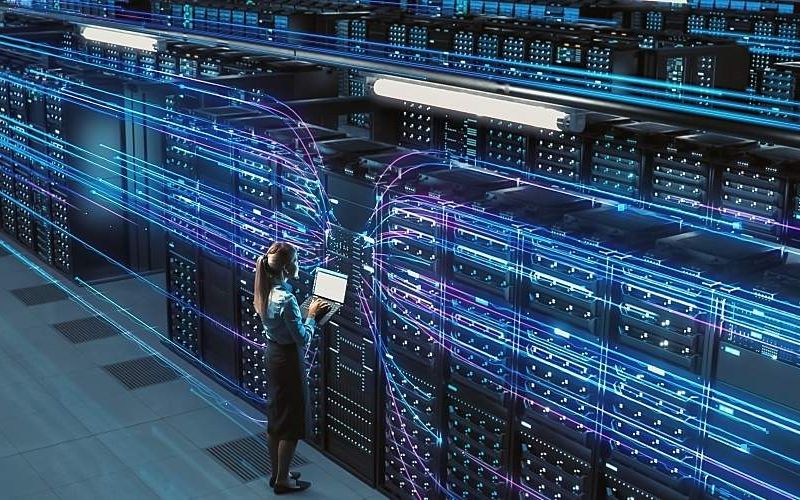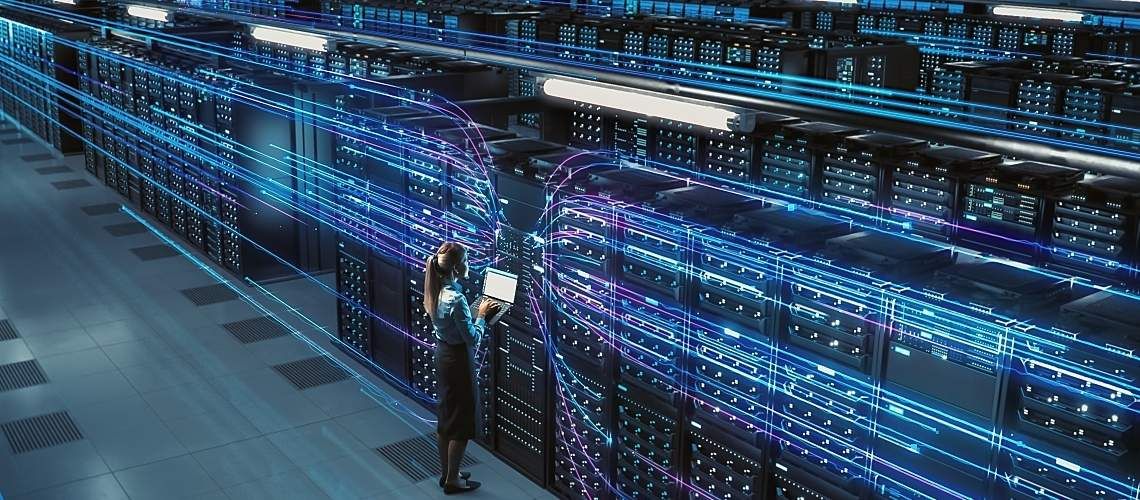The Water Crisis May Benefit from Technologies That Also Contribute to It


The global water crisis means safe drinking water is out of reach of more than 2 billion people, according to a 2024 United Nations report about world water development. But some technologies that could help—like artificial intelligence (AI)—are "thirsty," meaning they may also be part of the problem.
The report, titled "Water for Prosperity and Peace," called for more water education and found that AI had "the potential to enhance basin management, emergency response, and the operation and maintenance of water supply and wastewater treatment plants." But there's a downside: "AI and related technologies require large volumes of water for computer cooling systems, in addition to the (often water-intensive) energy required to power the equipment."
In every industry, AI and machine learning are becoming must-have technologies. Although a bit behind, the water sector is catching on to the use of AI to enhance water quality, predict maintenance needs, and forecast water shortages. But, first, utilities and labs need to be aware of the enormous quantities of energy and water required to use AI.
Let's take a closer look at AI in the water sector, data center needs that are more than doubling water use in some cases, and the possible role recycled and reclaimed water can play in bolstering the supply.
Tapping AI To Solve the Water Crisis
AI enables computer systems to interpret and respond to events without human help. To make that possible, computer scientists build algorithms—methods for performing or organizing tasks—that enable the system to quickly filter enormous quantities of data, perceive patterns, make decisions, and implement them.
In the water sector, AI can help utilities prevent emergencies by interpreting sensor data and recognizing leaks or failures in advance. That's critical because the aging water infrastructure means managers benefit from making repairs proactively instead of facing emergency shutdowns. In the United Kingdom, for example, Anglian Water is piloting an AI project to proactively monitor assets at wastewater treatment facilities and predict, detect, and address issues to improve maintenance in their water recycling centers.
AI can also analyze usage data and help predict residential, business, and industrial water demands at all hours and seasons, helping to determine available supplies and develop conservation measures.
Counting on AI for Water Quality
AI can also help water labs and utilities ensure water quality, improve treatment and test efficiency, and reduce water waste. To meet Safe Drinking Water Act standards, technicians test manually for everything from pH and disease-causing microorganisms to lead and heavy metals, like chromium, and physical parameters, like total dissolved solids (TDS). However, a computer equipped with AI can perform the same tests more quickly and accurately. By automating water testing, analysis, and data processing, AI lets technicians focus on other, less mundane, and more strategic tasks.
AI also enhances real-time monitoring of consumption patterns and environmental factors. Sensors and Internet of Things devices let facilities collect the data needed, and then AI algorithms trained on that data can forecast water quality and supply, getting better as the amount of data increases. With that information, utilities and communities can work toward a resilient supply.
Tracking Data Centers' Massive Water Consumption
Ensuring adequate water supplies becomes more daunting as the number of data centers and their energy consumption increases, producing more heat and requiring more water. Facilities use water indirectly off-site to generate electricity that powers the servers and directly on-site to cool servers. That's done most frequently using cooling towers, which need copious amounts of clean water—creating challenges for communities already strained for resources and subject to drought.
The amount of water data centers consume isn't exactly known, because most do not track or report this information. But a large data center can use as much as 5 million gallons of water a day, and that keeps rising. For example, as the data center capital of the world, Northern Virginia hosts more than 300 facilities processing nearly 70% of the world's digital information. The Loudon, Virginia water utility found data centers they supply had increased their drinking water use by more than 250% between 2019 and 2023.
Recycling to Cut Down Potable Use
Data centers rely on several sources for cooling water, including potable water, treated effluent, or reclaimed/recycled water. The water quality impacts the useful life of equipment—subjecting it to corrosion, scale, and growth of microbes. Local water utilities need to work with data center facility engineers to test seasonally for factors including pH levels, conductivity, total dissolved solids, chlorides, silicon, hardness, alkalinity, and microbial counts.
Cooling systems may also generate effluents consisting primarily of condensates that concentrate pollutants, such as TDS and chloride, which municipal wastewater treatment plants may not remove. To pretreat wastewater before discharge, data centers may need the equivalent of an on-site mini water treatment plant.
Ultimately, AI offers numerous opportunities to solve challenging issues in the water sector, especially as the technology improves. However, treatment plants and labs must be aware of AI's mounting water footprint and the effects that could have on testing and operations.






